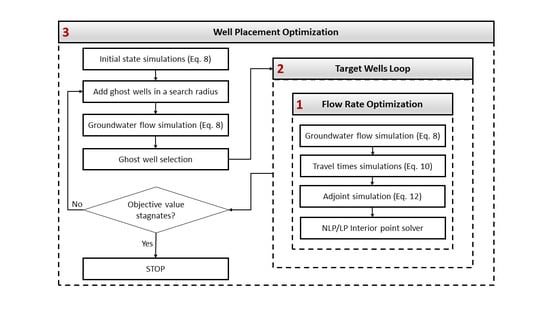Well Rate and Placement for Optimal Groundwater Remediation Design with A Surrogate Model
Abstract
:1. Introduction
2. Simulation-Optimization Approach
2.1. Problem Formulation
2.2. The Forward Problem
2.3. The Backward Problem
2.4. Flow Rate Optimization
2.5. Well Placement Optimization
2.6. Implementation of the Surrogate-based S/O Approach
3. Model Evaluation
3.1. Flow Rate Optimization in a Two-zoned One-dimensional Aquifer
3.2. Well Placement Optimization in A Homogeneous Two-dimensional Aquifer
4. Results and Discussion
4.1. Well Rate and Placement Optimization in A Two-dimensional Heterogeneous Aquifer
4.2. Well Rate and Placement Optimization in A Three-dimensional Heterogeneous Aquifer
5. Conclusions
- The travel time-based surrogate model provided a cheap and adequate tool to streamline the computationally demanding simulation-optimization approach for groundwater quality models.
- Owing to the stationarity of the surrogate model, computational savings are enormous. Large three-dimensional models as encountered in practice are processed timely in conventional hardware.
- The objective function formulation based on minimizing the Lorenz coefficient has been found effective to rank the relative efficiency of many remediation policies. The automatic differentiation method used to evaluate the objective function sensitivities contributes to the overall efficiency of the S/O model.
- This study found that well placement optimization in heterogeneous porous media is more important than well rate optimization in P&T remediation design. While this finding confirms previously published research, the merit of this work is to bring novel graphical interpretation tools facilitating the understanding of the underlying processes.
- When used in a S/O framework, two-dimensional models are optimistic on optimal P&T system performances. In general, they overestimate the delay in breakthrough at pumping wells and underestimate the cleanup time. Hence, three-dimensional models are a necessity rather than a luxury.
- Even if the project costs are not explicit components of the objective function, the introduced model could be used as a first-order approximation to estimate pump-and-treat capital remediation costs.
Funding
Acknowledgments
Conflicts of Interest
References
- Gorelick, S.M. A review of distributed parameter groundwater management modeling methods. Water Resour. Res. 1983, 19, 305–319. [Google Scholar] [CrossRef]
- Wagner, B.J. Recent advances in simulation-optimization groundwater management modeling. Rev. Geophys. 1995, 33, 1021–1028. [Google Scholar] [CrossRef]
- Zheng, C.; Bennett, G.D. Applied Contaminant Transport Modeling, 2nd ed.; Wiley: New York, NY, USA, 2002; pp. 494–528. [Google Scholar]
- Gorelick, S.M.; Zheng, C. Global change and the groundwater management challenge. Water Resour. Res. 2015, 51, 3031–3051. [Google Scholar] [CrossRef]
- McKinney, D.C.; Lin, M.D. Pump-and-Treat Ground-Water Remediation System Optimization. J. Water Resour. Plan. Manag. 1996, 122, 128–136. [Google Scholar] [CrossRef]
- Huang, C.; Mayer, A.S. Pump-and-treat optimization using well locations and pumping rates as decision variables. Water Resour. Res. 1997, 33, 1001–1012. [Google Scholar] [CrossRef]
- Matott, L.S.; Rabideau, A.J.; Craig, J.R. Pump-and-treat optimization using analytic element method flow models. Adv. Water Resour. 2006, 29, 760–775. [Google Scholar] [CrossRef]
- Mategaonkar, M.; Eldho, T.I. Groundwater remediation optimization using a point collocation method and particle swarm optimization. Environ. Model. Softw. 2012, 32, 37–48. [Google Scholar] [CrossRef]
- Piscopo, A.N.; Kasprzyk, J.R.; Neupauer, R.M. An iterative approach to multi-objective engineering design: Optimization of engineered injection and extraction for enhanced groundwater remediation. Environ. Model. Softw. 2015, 69, 253–261. [Google Scholar] [CrossRef]
- Chang, L.C.; Chu, H.J.; Hsiao, C.T. Optimal planning of a dynamic pump-treat-inject groundwater remediation system. J. Hydrol. 2007, 342, 295–304. [Google Scholar] [CrossRef]
- Guan, J.; Aral, M.M. Optimal remediation with well locations and pumping rates selected as continuous decision variables. J. Hydrol. 1999, 221, 20–42. [Google Scholar] [CrossRef]
- Cheng, A.H.D.; Halhal, D.; Naji, A.; Ouazar, D. Pumping optimization in saltwater-intruded coastal aquifers. Water Resour. Res. 2000, 36, 2155–2165. [Google Scholar] [CrossRef] [Green Version]
- Bhattacharjya, R.K.; Datta, B. Optimal Management of Coastal Aquifers Using Linked Simulation Optimization Approach. Water Resour. Manag. 2005, 19, 295–320. [Google Scholar] [CrossRef]
- Sreekanth, J.; Datta, B. Review: Simulation-optimization models for the management and monitoring of coastal aquifers. Hydrogeol. J. 2015, 23, 1155–1166. [Google Scholar] [CrossRef]
- Jenkins, M.W.; Lund, J.R.; Howitt, R.E.; Draper, A.J.; Msangi, S.M.; Tanaka, S.K.; Ritzema, R.S.; Marques, G.F. Optimization of California’s Water Supply System: Results and Insights. J. Water Resour. Plan. Manag. 2004, 130, 271–280. [Google Scholar] [CrossRef]
- Baú, D.A. Planning of Groundwater Supply Systems Subject to Uncertainty Using Stochastic Flow Reduced Models and Multi-Objective Evolutionary Optimization. Water Resour. Manag. 2012, 26, 2513–2536. [Google Scholar] [CrossRef]
- Gorelick, S.M.; Evans, B.; Remson, I. Identifying sources of groundwater pollution: An optimization approach. Water Resour. Res. 1983, 19, 779–790. [Google Scholar] [CrossRef]
- Gorelick, S.M. A model for managing sources of groundwater pollution. Water Resour. Res. 1982, 18, 773–781. [Google Scholar] [CrossRef]
- Akın, S.; Kok, M.V.; Uraz, I. Optimization of well placement geothermal reservoirs using artificial intelligence. Comput. Geosci. 2010, 36, 776–785. [Google Scholar] [CrossRef]
- Chen, M.; Tompson, A.F.B.; Mellors, R.J.; Abdalla, O. An efficient optimization of well placement and control for a geothermal prospect under geological uncertainty. Appl. Energy 2015, 137, 352–363. [Google Scholar] [CrossRef] [Green Version]
- Gonzâlez-Nicolâs, A.; Cihan, A.; Petrusak, R.; Zhou, Q.; Trautz, R.; Riestenberg, D.; Birkholzer, J.T. Pressure management via brine extraction in geological CO2 storage: Adaptive optimization strategies under poorly characterized reservoir conditions. Int. J. Greenh. Gas Control 2019, 83, 176–185. [Google Scholar] [CrossRef]
- Finsterle, S. Demonstration of optimization techniques for groundwater plume remediation using iTOUGH2. Environ. Model. Softw. 2006, 21, 665–680. [Google Scholar] [CrossRef] [Green Version]
- Aksoy, A.; Culver, T.B. Impacts of Physical and Chemical Heterogeneities on Aquifer Remediation Design. J. Water Resour. Plan. Manag. 2004, 130, 311–320. [Google Scholar] [CrossRef]
- Razavi, S.; Tolson, B.A.; Burn, D.H. Review of surrogate modeling in water resources. Water Resour. Res. 2012, 48, W07401. [Google Scholar] [CrossRef]
- Asher, M.J.; Croke, B.F.W.; Jakeman, A.J.; Peeters, L.J.M. A review of surrogate models and their application to groundwater modeling. Water Resour. Res. 2015, 51, 5957–5973. [Google Scholar] [CrossRef]
- Regis, R.G.; Shoemaker, C.A. A quasi-multistart framework for global optimization of expensive functions using response surface models. J. Glob. Optim. 2012, 56, 1719–1753. [Google Scholar] [CrossRef]
- Vermeulen, P.T.M.; Heemink, A.W.; Stroet, C.B.M.T. Reduced models for linear groundwater flow models using empirical orthogonal functions. Adv. Water Resour. 2004, 27, 57–69. [Google Scholar] [CrossRef]
- Cardoso, M.A.; Durlofsky, L.J.; Sarma, P. Development and application of reduced-order modeling procedures for subsurface flow simulation. Int. J. Numer. Methods Eng. 2009, 77, 1322–1350. [Google Scholar] [CrossRef]
- Jenny, P.; Lee, S.; Tchelepi, H. Multiscale finite-volume method for elliptic problems in subsurface flow simulation. J. Comput. Phys. 2003, 187, 47–67. [Google Scholar] [CrossRef]
- Efendiev, Y.; Hou, T. Multiscale finite element methods for porous media flows and their applications. Appl. Numer. Math. 2007, 57, 577–596. [Google Scholar] [CrossRef] [Green Version]
- Ayvaz, M.T.; Karahan, H. A simulation/optimization model for the identification of unknown groundwater well locations and pumping rates. J. Hydrol. 2008, 357, 76–92. [Google Scholar] [CrossRef]
- Farthing, M.W.; Fowler, K.R.; Fu, X.; Davis, A.; Miller, C.T. Effects of model resolution on optimal design of subsurface flow and transport problems. Adv. Water Resour. 2012, 38, 27–37. [Google Scholar] [CrossRef]
- Sbai, M.A. A Practical Grid-Based Alternative Method to Advective Particle Tracking. Groundwater 2018, 56, 881–892. [Google Scholar] [CrossRef] [PubMed]
- Shook, G.M.; Mitchell, K.M. A Robust Measure of Heterogeneity for Ranking Earth Models: The F PHI Curve and Dynamic Lorenz Coefficient. In Proceedings of the SPE Annual Technical Conference and Exhibition, New Orleans, LA, USA, 4–7 October 2009; SPE: Dallas, LA, USA, 2009. [Google Scholar]
- Stiles, W.E. Use of permeability distribution in waterflood calculations. Trans. AIME 1949, 186, 9–13. [Google Scholar]
- Lake, L.W. Enhanced Oil Recovery; Prentice-Hall: Upper Saddle River, NJ, USA, 1989. [Google Scholar]
- Sun, N.-Z. Inverse Problems in Groundwater Modeling, 2nd ed.; Springer: Dordrecht, The Netherlands, 1999; pp. 103–140. [Google Scholar]
- Mayer, A.S.; Kelley, C.T.; Miller, C.T. Optimal design for problems involving flow and transport phenomena in subsurface systems. Adv. Water Resour. 2002, 29, 760–775. [Google Scholar] [CrossRef]
- Bear, J.; Cheng, A.H.D. Modeling Groundwater Flow and Contaminant Transport; Springer: Dordrecht, The Netherlands, 2010. [Google Scholar]
- Griewank, A.; Walther, A. Evaluating Derivatives: Principles and Techniques of Algorithmic Differentiation, 2nd ed.; SIAM: Philadelphia, PA, USA, 2008. [Google Scholar]
- Zandvliet, M.; Handels, M.; Van Essen, G.; Brouwer, R.; Jansen, J.D. Adjoint-Based Well-Placement Optimization under Production Constraints. SPE J. 2008, 13, 392–399. [Google Scholar] [CrossRef]
- Wang, H.F.; Anderson, M.P. Introduction to Groundwater Modeling: Finite Difference and Finite Element Methods; Academic Press: San Diego, CA, USA, 1995. [Google Scholar]
- Chiogna, G.; Rolle, M.; Bellin, A.; Cirpka, O.A. Helicity and flow topology in three-dimensional anisotropic porous media. Adv. Water Resour. 2014, 73, 134–143. [Google Scholar] [CrossRef]
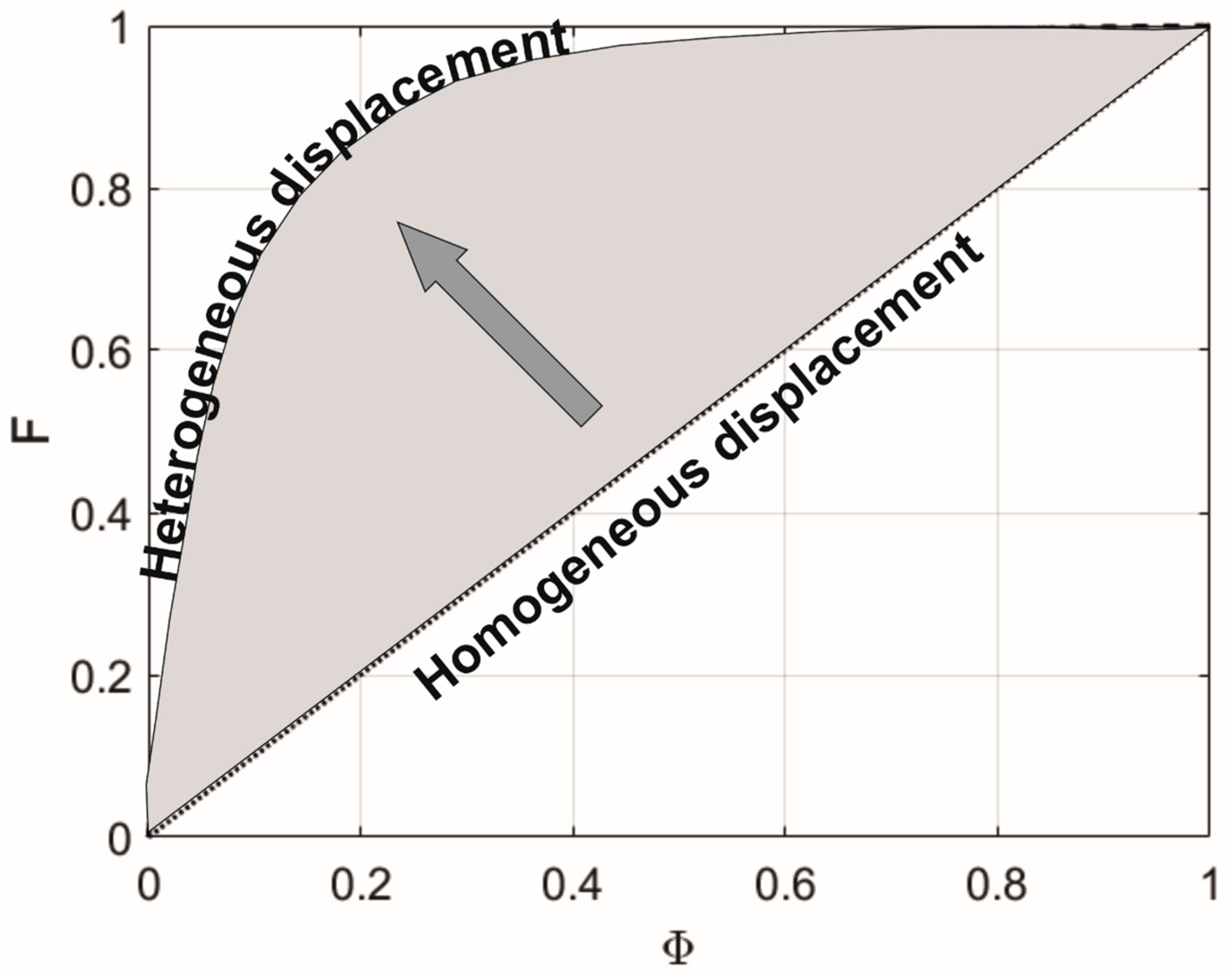
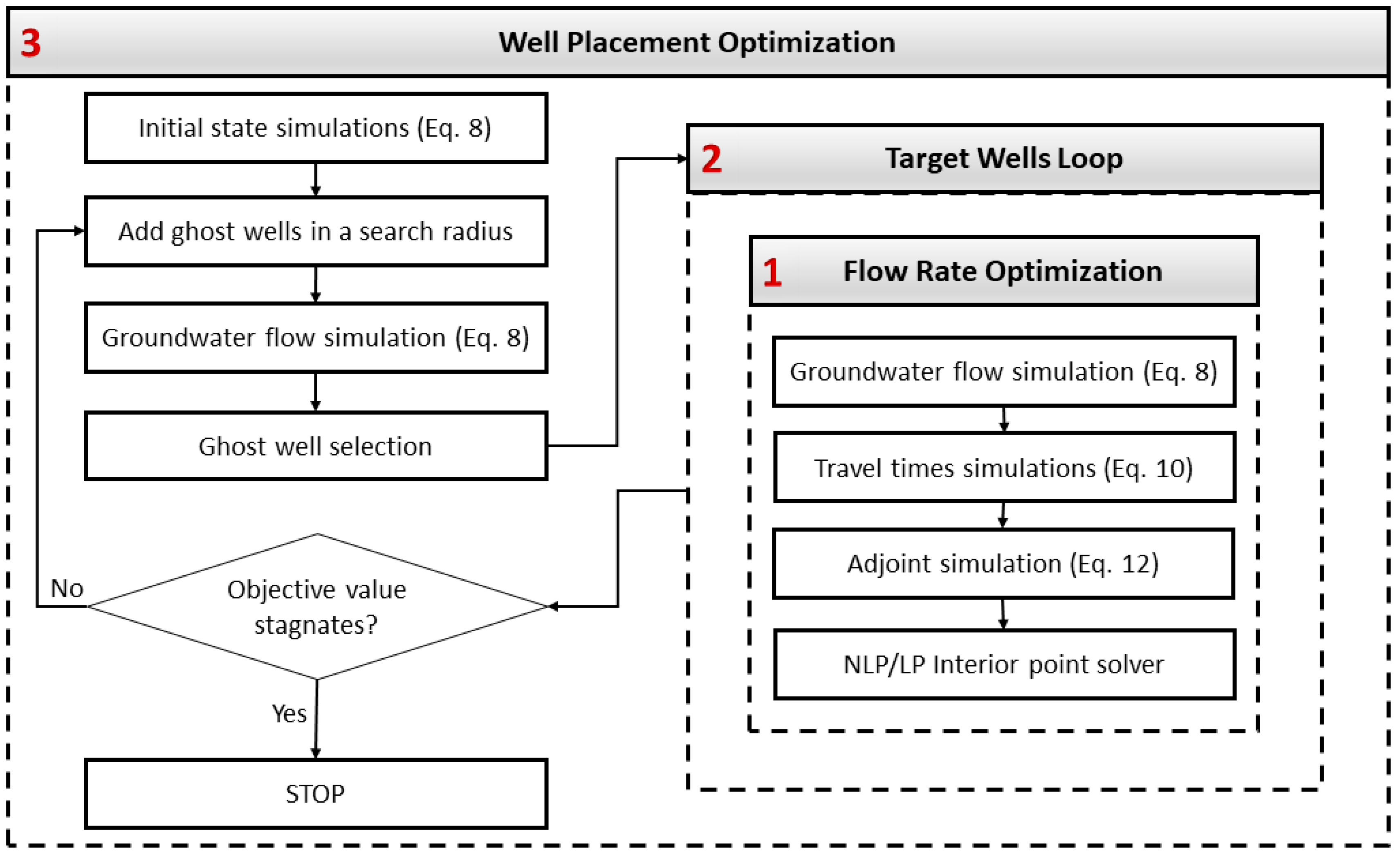
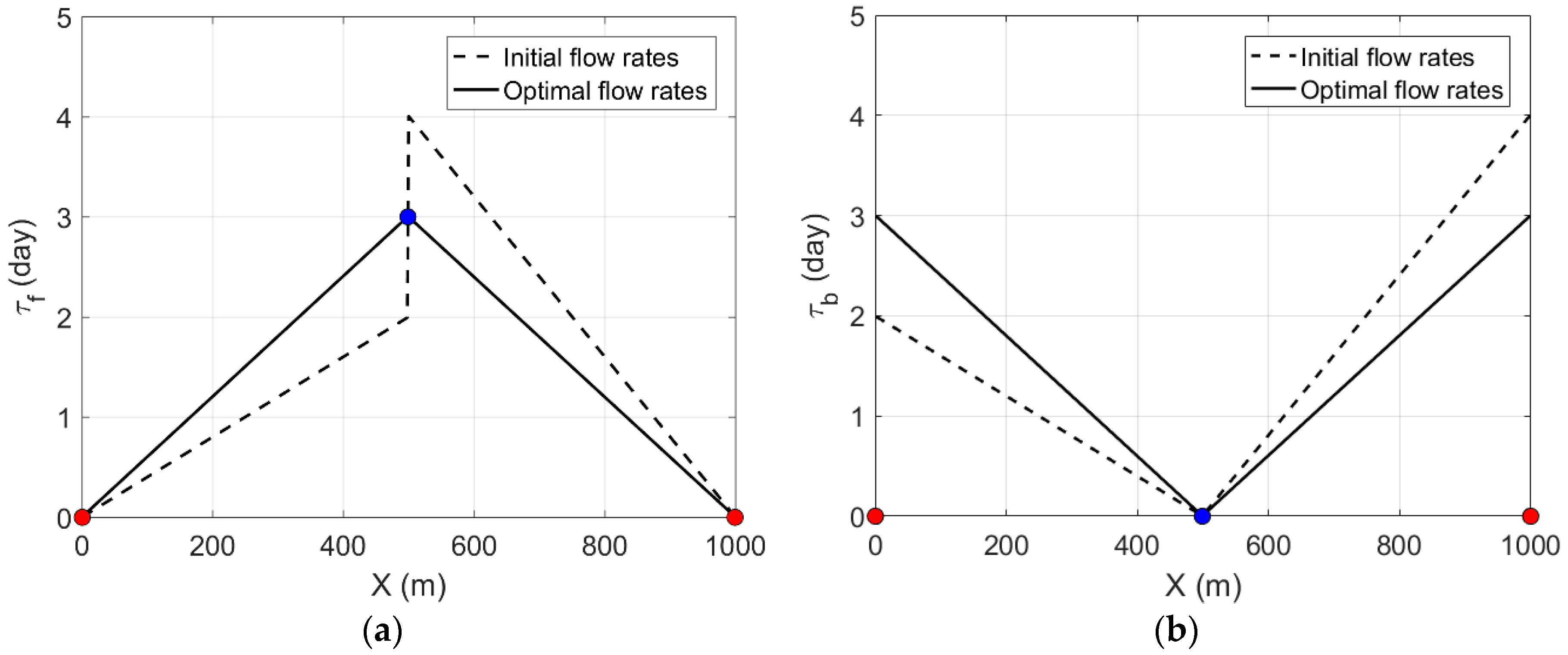
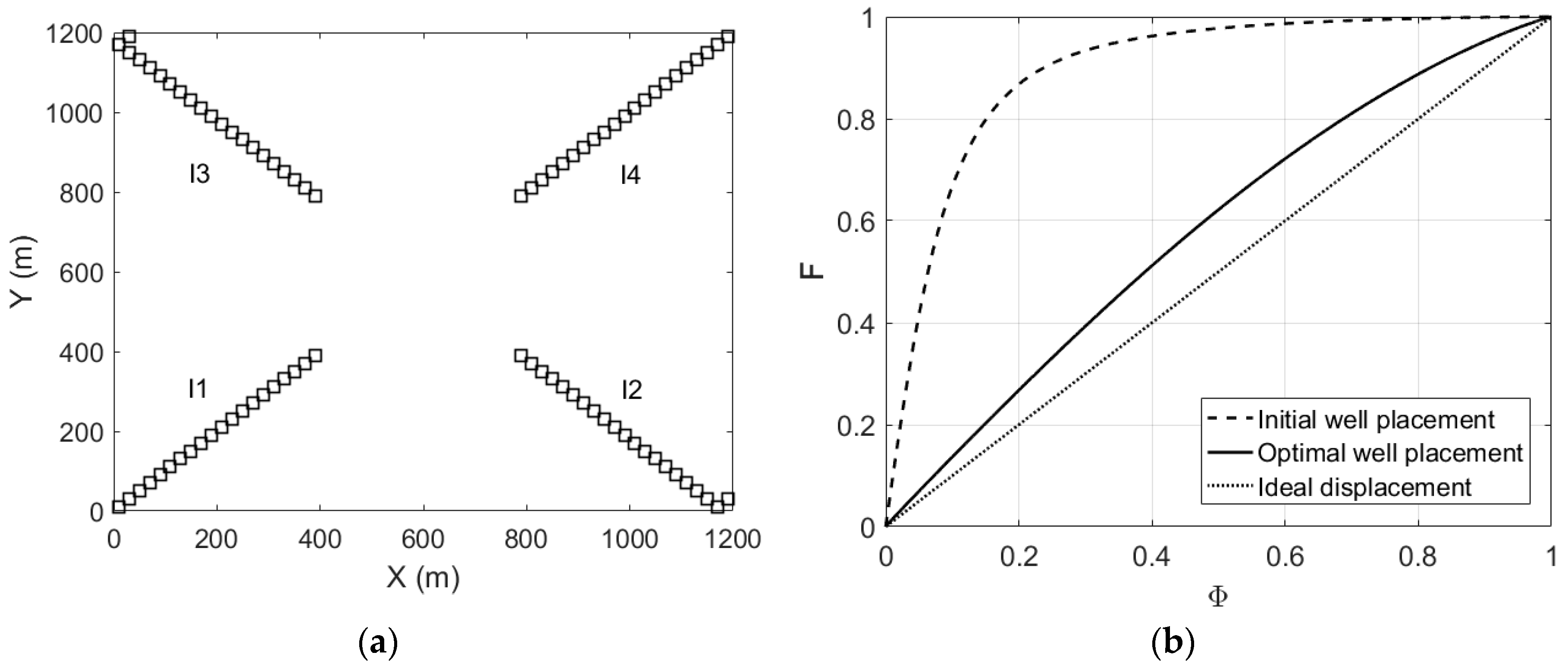



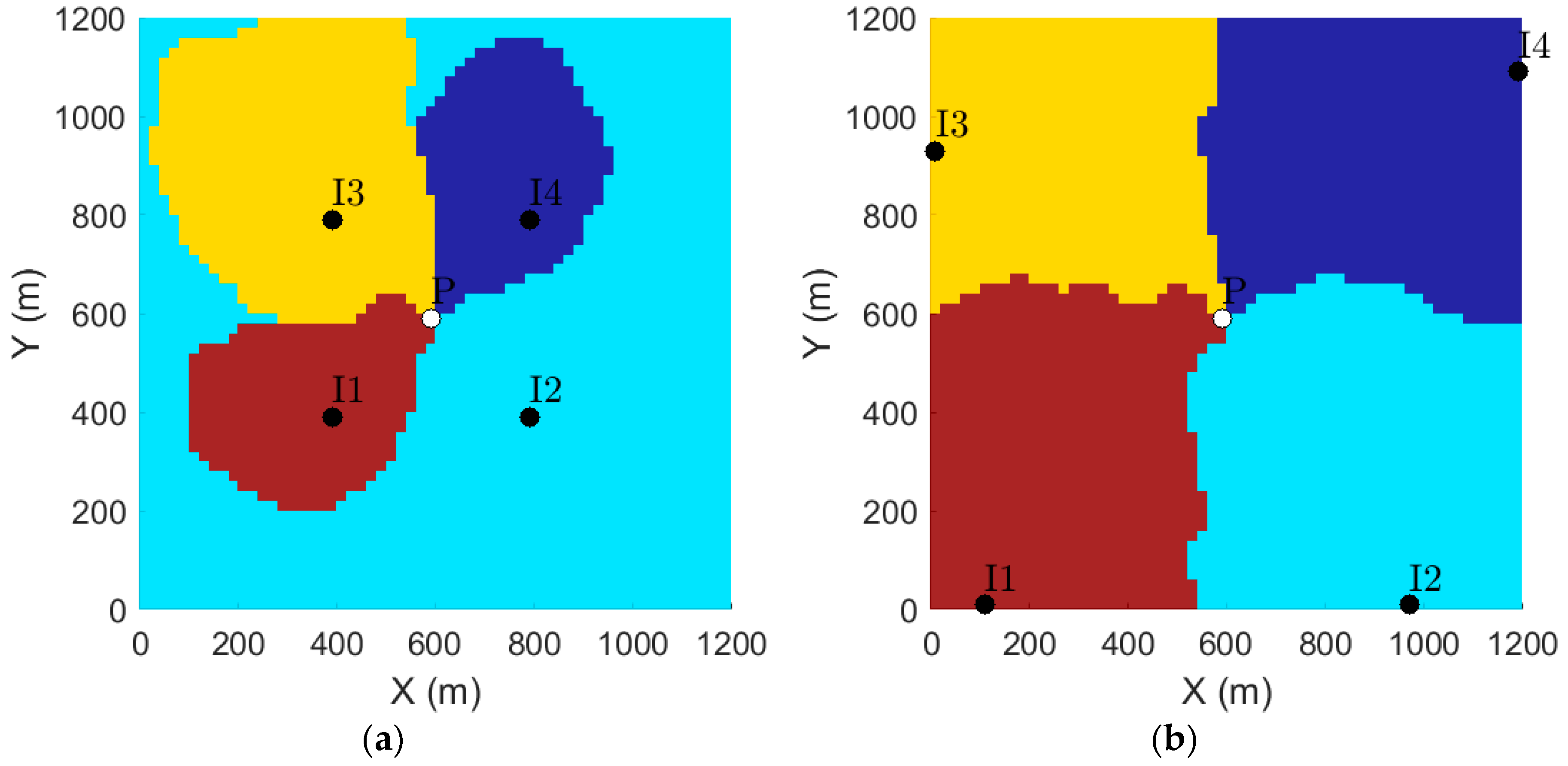
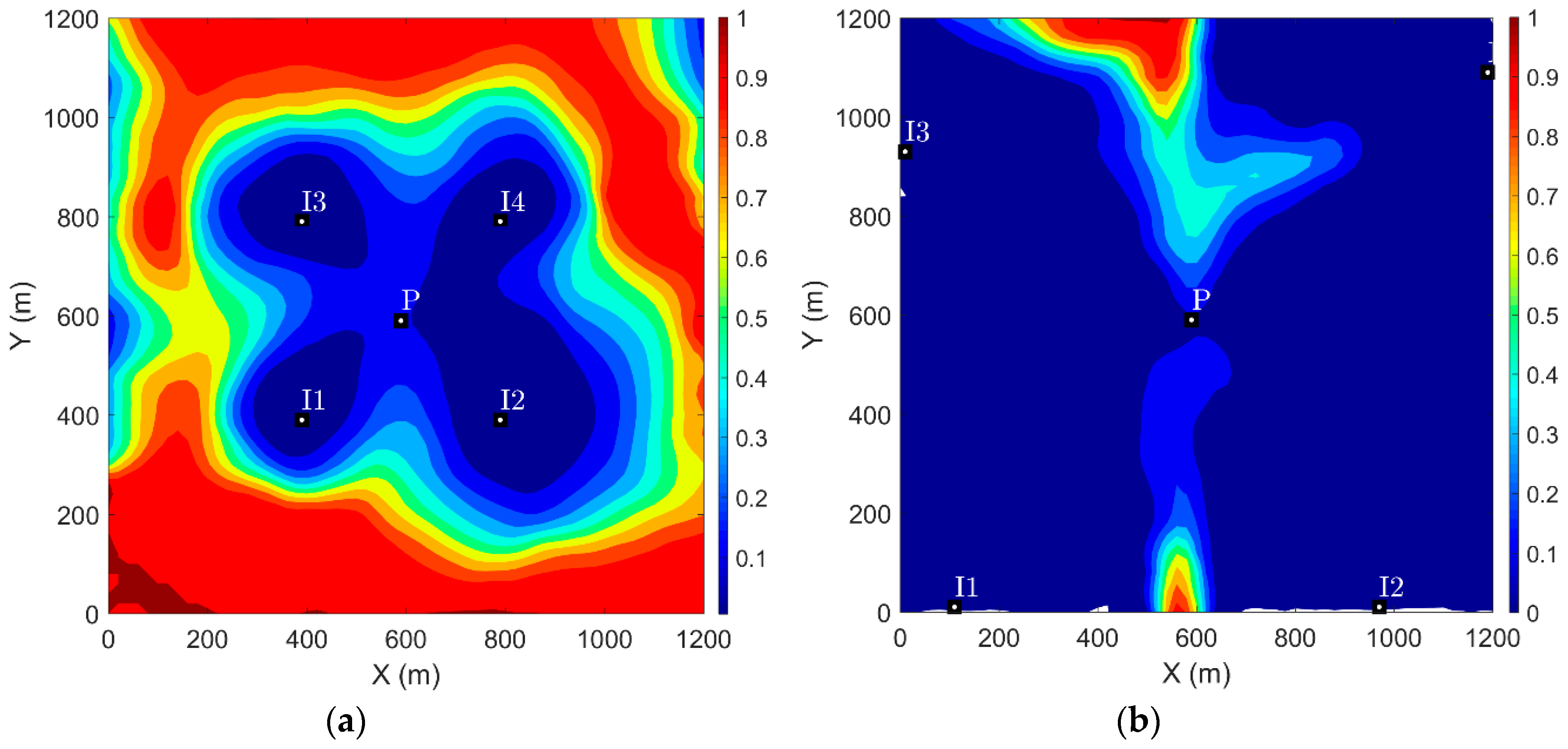

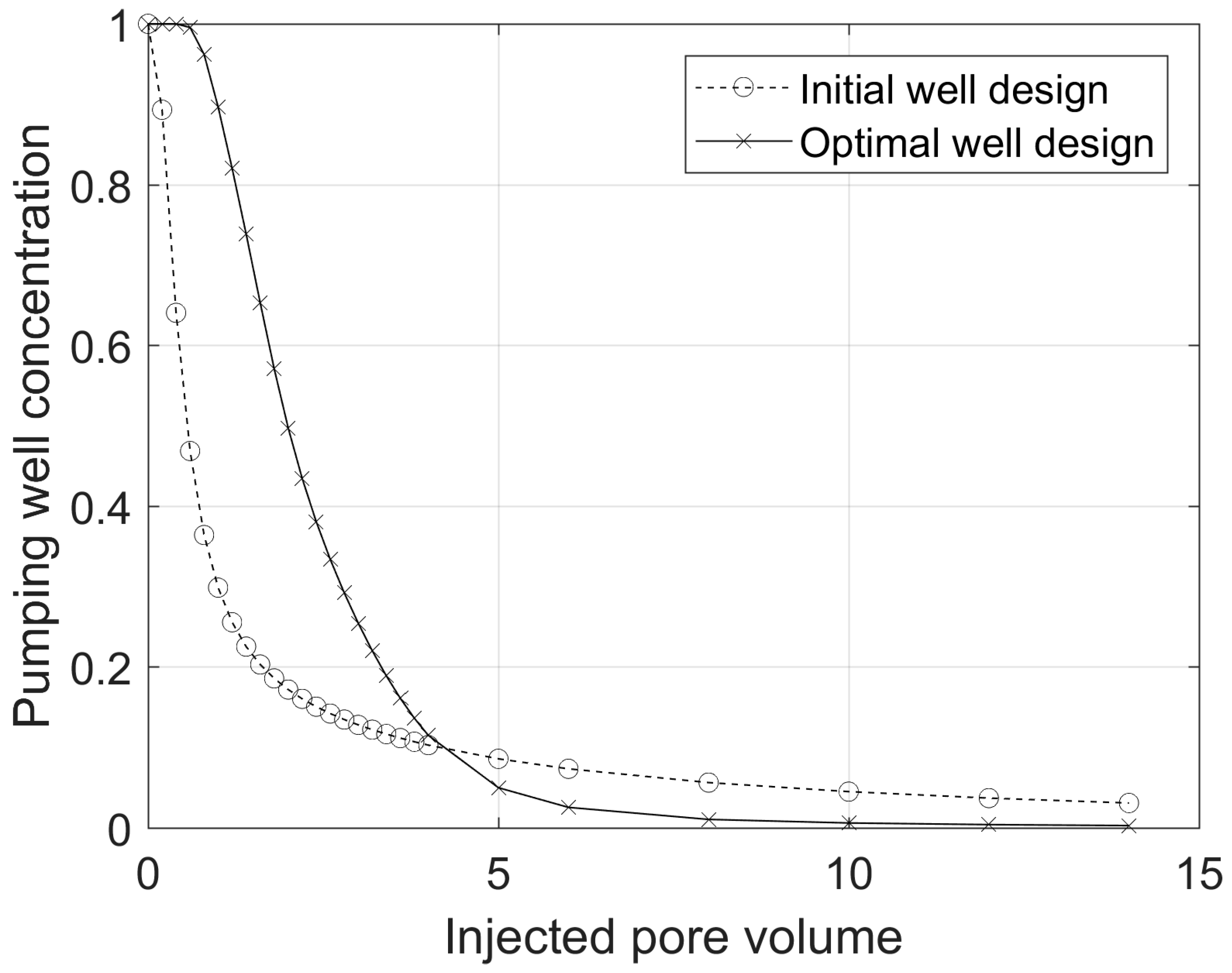
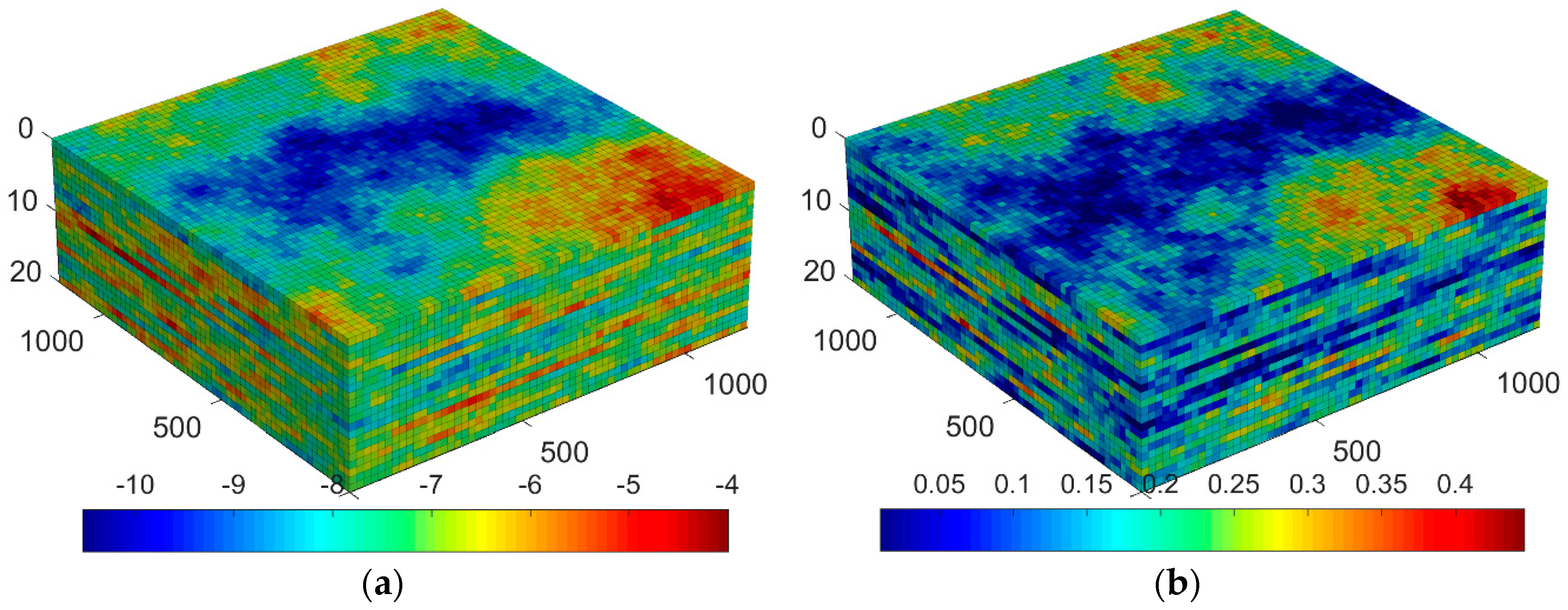
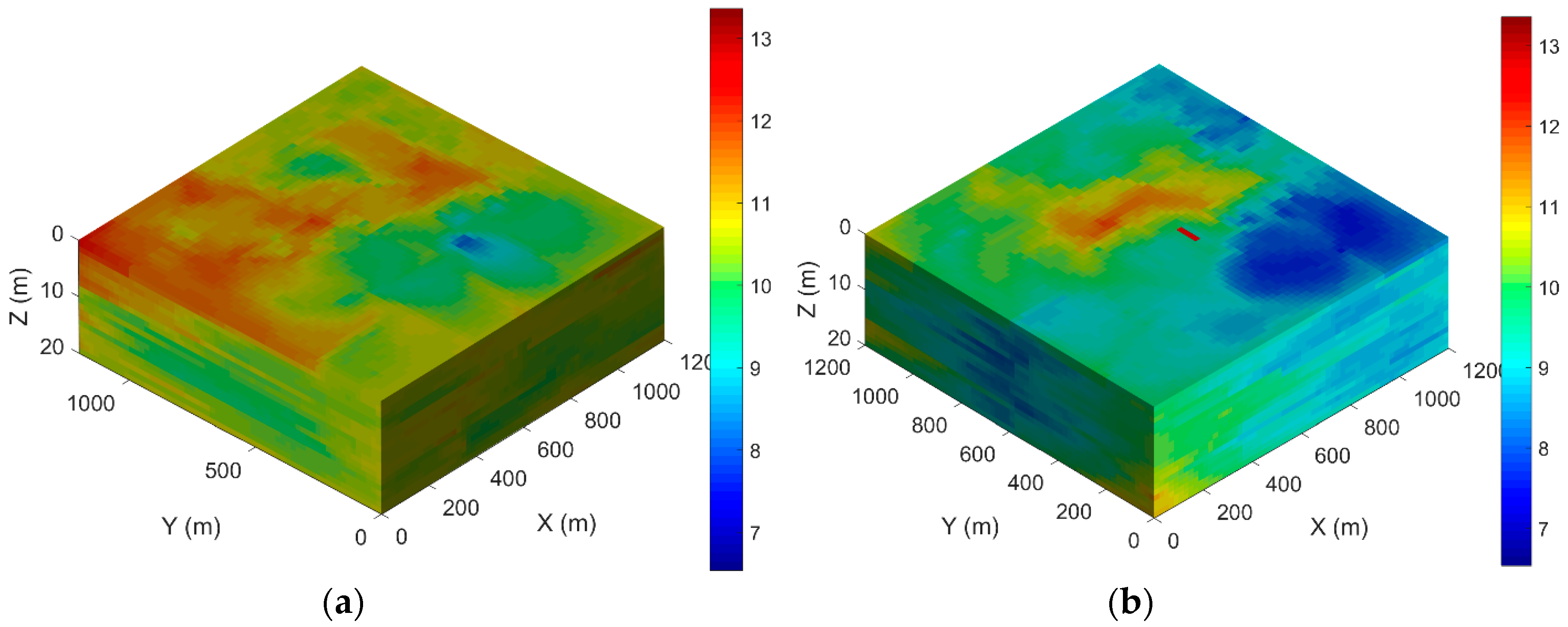
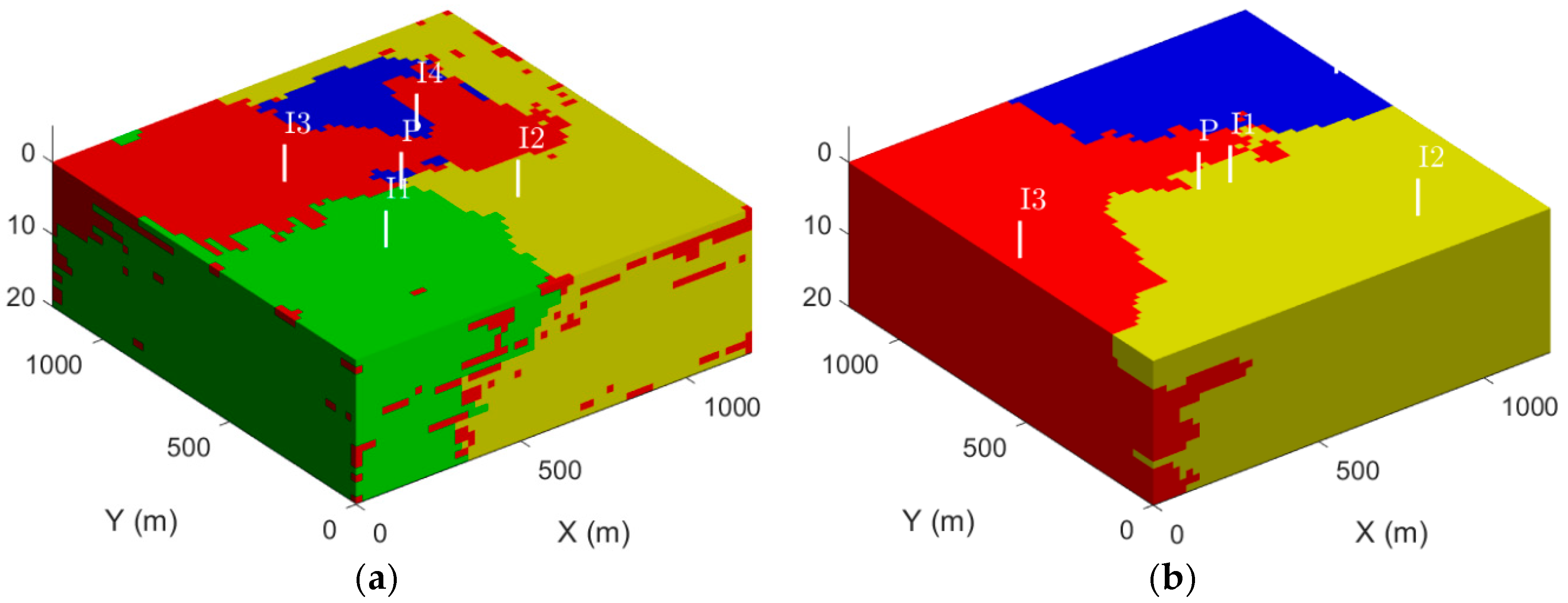
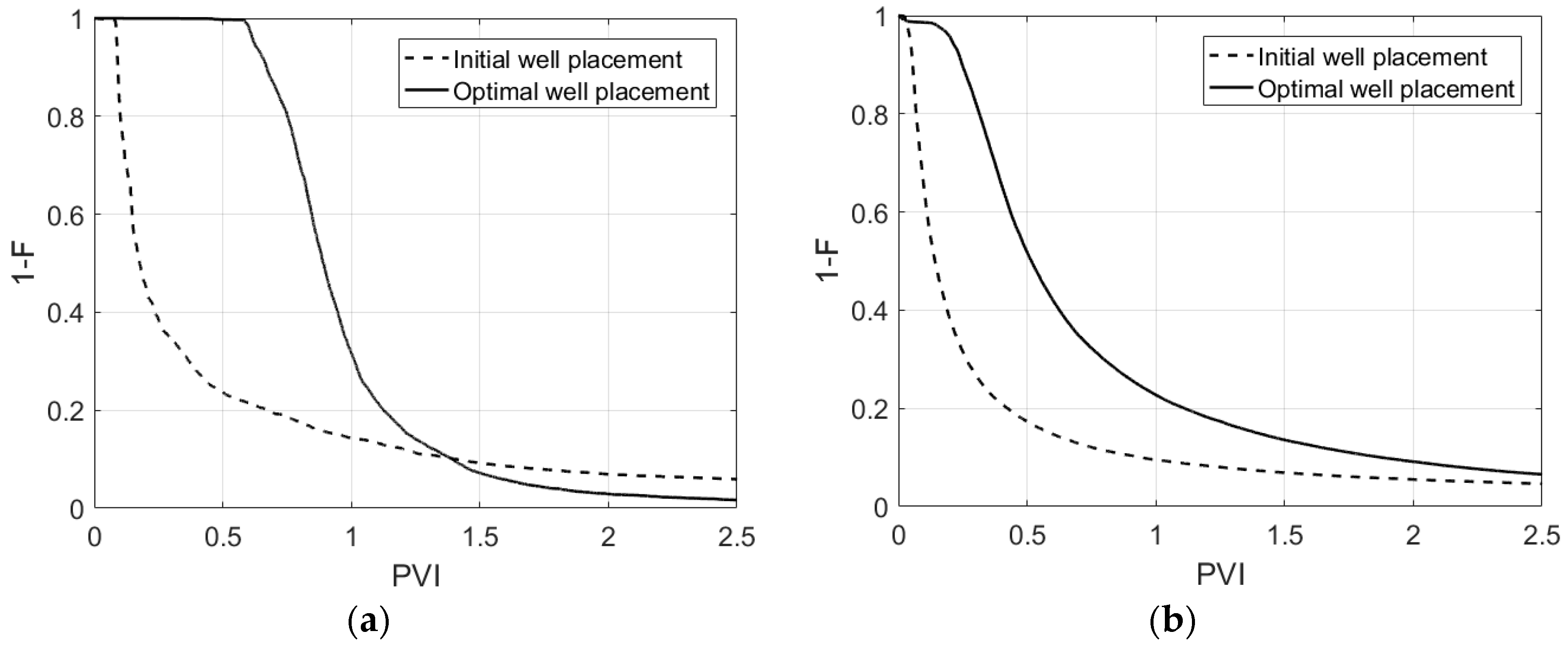
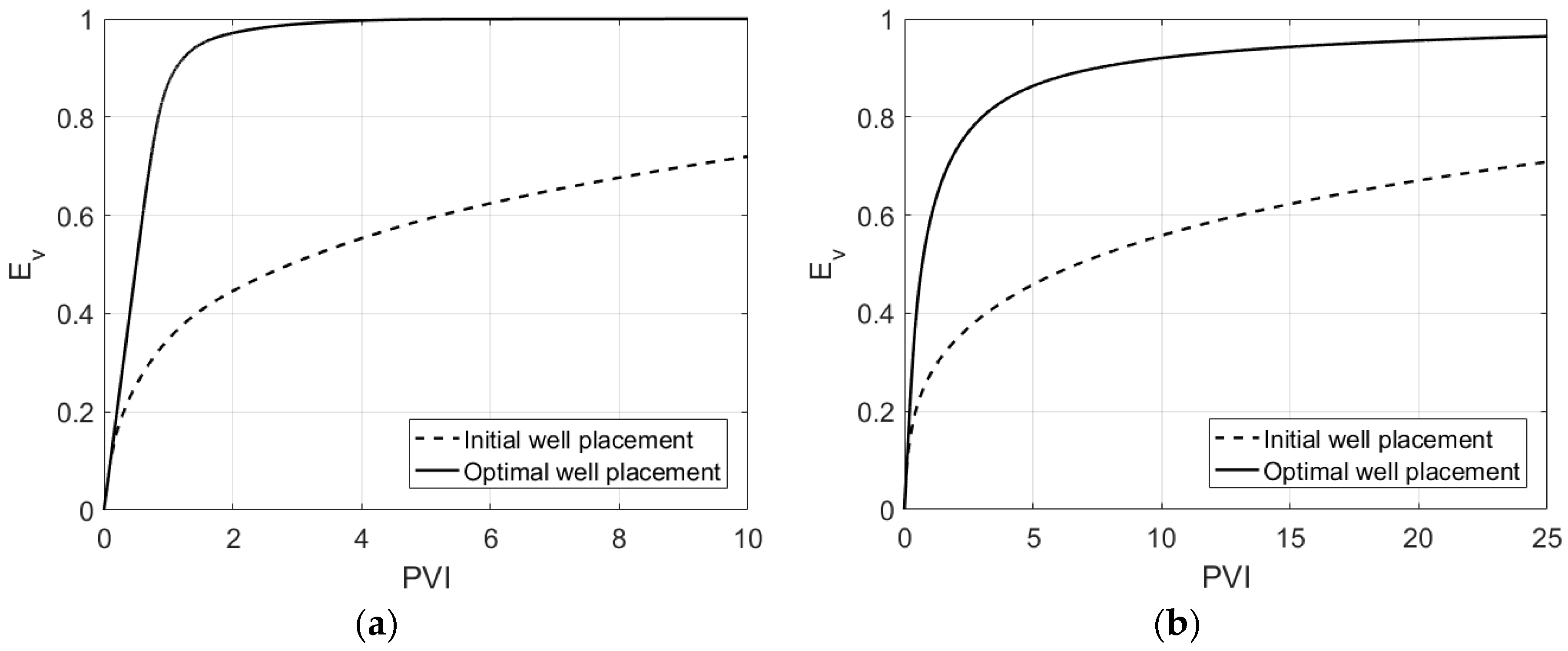
| Parameter(s) | Value(s) |
|---|---|
| Hydraulic conductivity K | 10−5 m/s |
| Porosity | 20% |
| Porosity | 40% |
| Total flow rate Q | 100 m3/day |
| Maximum allowed flow rate | 99 m3/day |
| Minimum allowed flow rate | 1 m3/day |
| S/O convergence tolerance tolopt | 1% |
© 2019 by the author. Licensee MDPI, Basel, Switzerland. This article is an open access article distributed under the terms and conditions of the Creative Commons Attribution (CC BY) license (http://creativecommons.org/licenses/by/4.0/).
Share and Cite
Sbai, M.A. Well Rate and Placement for Optimal Groundwater Remediation Design with A Surrogate Model. Water 2019, 11, 2233. https://doi.org/10.3390/w11112233
Sbai MA. Well Rate and Placement for Optimal Groundwater Remediation Design with A Surrogate Model. Water. 2019; 11(11):2233. https://doi.org/10.3390/w11112233
Chicago/Turabian StyleSbai, Mohammed Adil. 2019. "Well Rate and Placement for Optimal Groundwater Remediation Design with A Surrogate Model" Water 11, no. 11: 2233. https://doi.org/10.3390/w11112233
APA StyleSbai, M. A. (2019). Well Rate and Placement for Optimal Groundwater Remediation Design with A Surrogate Model. Water, 11(11), 2233. https://doi.org/10.3390/w11112233



